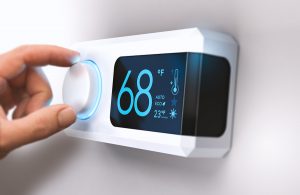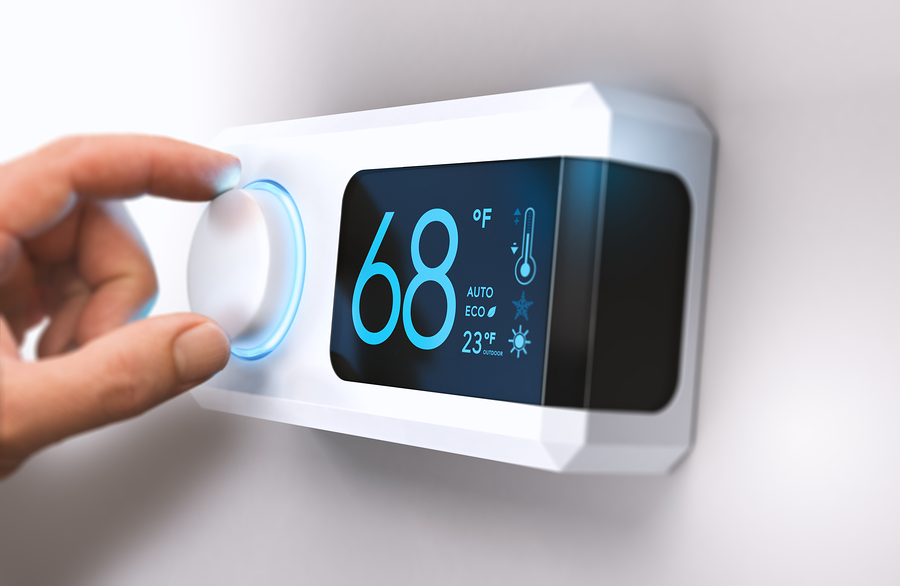
When we think of measuring the temperature of our bodies, we think of thermometers. With our homes, we think of thermostats, but they don’t actually measure the temperature of our homes – they are tools that try to maintain the temperature we set.
Types of thermostats and how they work
Thermal expansion means when something heats up, it grows bigger. Based on this concept, mechanical thermostats use different technology to switch an electric circuit on or off.
Bimetallic thermostats
Two metal strips work as a bridge in an electrical circuit that connects to your heating system. Normally the bridge is flat and conducts electricity through the circuit. But when the room (and the strip) gets hot, the metal expands and bends the strip slightly until it breaks the circuit. Then the electricity (and heating) switches off, and the room cools. Likewise, as the room cools enough, the bridge goes back to being flat, the electricity flows again, and the heat comes back on.
Gas bellows thermostats
This thermostat design has metal discs with gas-filled bellows. When a room warms up, the gas in the bellows heats up and expands, pushing the discs out, where they contact with a switch which turns off the electric circuit (and the heat). As the room cools, the discs contract, move away from the switch, and the electric circuit flows to turns on the heat again.
Radiator valve thermostats
A central heating radiator typically uses a wax thermostat. A little plug of wax inside a sealed chamber melts when temperatures rise. The melted liquid expands and pushes a rod to switch something on or off. When it cools, it hardens into wax, decreases in size, and releases pressure from the rod. When the radiators reach the set heat level, the expanded wax valves reduce the flow of water until the temperature falls again.
Smart programmable thermostats
Taking the thermostat technology to the next level of operation is the programmable thermostat, which can save you money on your energy costs by allowing you to pre-set your heating and cooling cycles. Remote energy management (REM) thermostats allow you to do this from any location, using your computer, tablet, or smartphone. At the top of the thermal-tech pyramid is the learning thermostat, which forms a cycle based on how you’ve manually altered the temperature at different times of the day and compares it with objective temperature and humidity measurements to establish a pattern of maximum efficiency.
Talk to an HVAC Pro in Orlando
Check with us here at Rainaldi to see which thermostat technology will work best with the heating and cooling system in your Orlando area home. Having the right equipment – and the right understanding of how to use it – can mean significant savings on your energy bills year-round.

